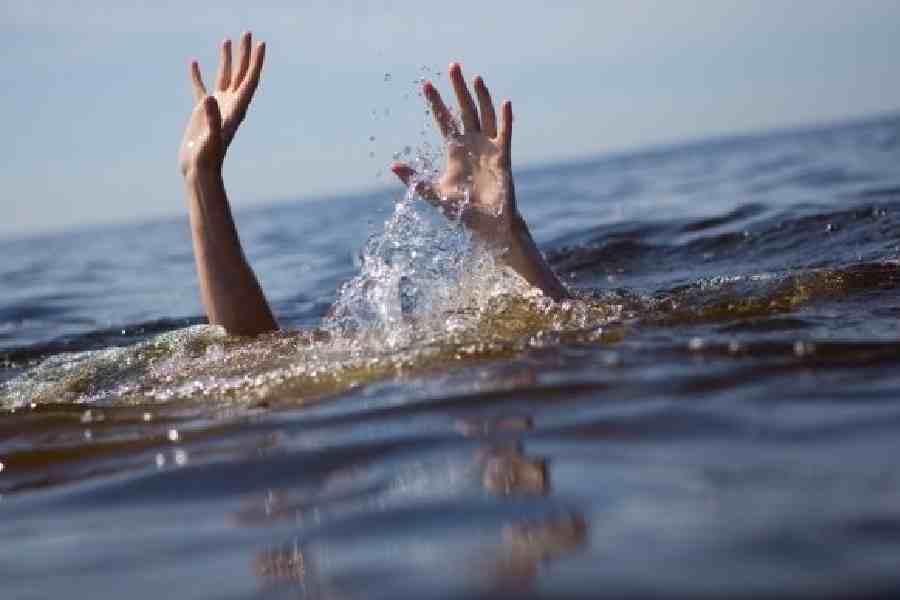
March 19: Piya Roy, the cetologist protagonist of Amitav Ghosh's The Hungry Tide, spotted a handful of them in the Sunderbans. Experts from the Worldwide Fund for Nature-India recently found around 80 between Farakka and Ganga Sagar.
Meet the Ganges River Dolphin, or the Platanista gangetica, whose habitat faces serious threat in Bengal, according to the ongoing survey.
The WWF study was conducted by observing and counting dolphins from the riverbank at specific locations along the 534km stretch of the Hooghly in Bengal. The locations were chosen based on three factors - the depth of the water, whether it is a relatively quiet spot, and the character of the river at that point, preference being given to confluences or meandering waters. The team also took into consideration feedback from local fishermen.
The Gangetic dolphin, an endangered species according to the International Union for Conservation of Nature, can be found in the Ganga-Brahmaputra-Meghna and Karnaphuli-Sangu river systems of Nepal, India and Bangladesh.
Loss of habitat - attributed to large-scale discharge of municipal waste, siltation and the countless brick kilns that have sprung up along the riverbanks - is the greatest threat faced by these freshwater dolphins. Brick kilns discharge hot water while civic waste pollutes the water and alters its character. Siltation reduces the depth of the river. Too much movement of mechanised boats or trawlers, too, drive away aquatic animals.
The team scanned nearly 45 spots in search of the Gangetic dolphin but the mammal could only be sighted at 20 of the locations. The most dolphins were seen at Sabujdwip and Khamargachi in the Hooghly district, Bakshi near Bagnan in Howrah district and Nabadwip in Nadia district.
Sabujdwip is at the confluence of the Hooghly and the Behula rivers, Nabadwip at the confluence of the Jalangi and the Hooghly rivers and Bakshi is where the Rupnarayan, the Damodar and the Mundeshwari meet. At Sabujdwip, the team found 13 dolphins, the highest in any single location. Gangetic dolphins can also be found in Gadiara, Diamond Harbour and Garchumuk.
"We found eight to 13 dolphins in each of these places," said Mahua Roy Chowdhury, a marine biologist and project associate in WWF-India who played an instrumental role in the survey. "Dolphins prefer water that is at least 5ft to 8ft deep." These marine mammals can usually be found in turbulent waters, where there are enough fish for them to feed on.
Ravindra Kumar Sinha, head of zoology at Patna University and recipient of a Padma Shri for his work on the conservation of Gangetic dolphins, said these dolphins prefer deep water with adjoining shallow water. "They live in a zone where there is little or no current that helps them save energy. If they sense danger, they can go into the deep waters," he said. The dolphins swim from the no-current zone to the edges to hunt for fish and return.
Each spot observation - the process of counting dolphins at one spot on the riverbank - involved three or four people. "We divided the river's length into parts. Each observer was asked to concentrate only on the stretch assigned," said Roy Chowdhury, who has co-authored a paper with Sangita Mitra, a zoologist with National Biodiversity Authority, and Saswati Sen, the Bengal director of WWF-India, that was published in the Journal of Threatened Taxa.
Care was taken to avoid double counting. Whenever a dolphin was sighted, the observer would shout out to alert the rest. If a second dolphin was seen in another zone within the next few seconds, it was counted as a second sighting. A second counting was recognised only when a dolphin was cited in a zone far from the first sighting spot. If dolphins were seen at the same moment in separate zones, it made the task easier as there was no chance of double counting.
The survey results will be tallied with a census, to be conducted in winter. A boat will travel along the stretch and count the dolphins visible. The results of the spot observations and census will be collated to prepare a final report.










